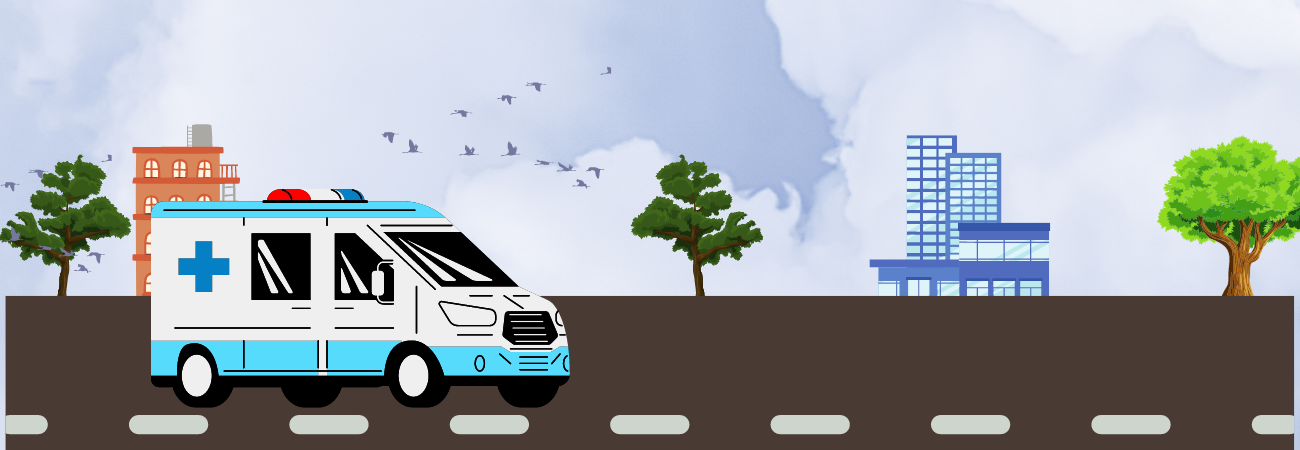
Importance of Ambulance Service
Emergency situations can strike anyone, anywhere, at any time. These events can have a profound impact on individuals and communities, often leaving lasting physical and emotional scars. It is crucial that we take steps to prepare ourselves and our communities for these situations, so we can minimize their impact and recover more quickly.
We will explore some of the most common emergency situations that people may encounter, including heart attacks, strokes, and road accidents and how can save their life using our efforts eg: Treatment start within Golden Hours of patients etc.
Take Deep Breath Call Near Ambulance
In emergency situations, every second counts. It's important to remain calm and take deep breaths before taking any actions. One of the fastest ways to get help is by calling an Near Ambulance Near Ambulance has GPS technology to locate you and send help quickly. Remember, your life is precious and it's important to take swift action in an emergency.
When calling for an Near Ambulance, be sure to provide as much information as possible about the situation. This includes your location, the nature of the emergency, and any other relevant details. Stay on the line with the operator until help arrives and follow any instructions they may give you. With quick thinking and the right tools, you can help save lives in emergency situations.
An Emergency can happen anywhere
Emergency situations can happen at any time and in any place. Whether you are at home, at work, on the road, or in a public space, it is important to be aware of potential hazards and to know how to respond.
By being prepared and knowing what to do in an emergency, you can help protect yourself and those around you from harm. Remember, every second counts in an emergency situation, so act quickly and confidently to minimize the impact of the event.
Heart Attack
A heart attack occurs when the blood flow to the heart is blocked, usually by a clot. Symptoms of a heart attack can include chest pain or discomfort, shortness of breath, nausea, lightheadedness, or discomfort in the arms, neck, jaw, or back. If you or someone around you experiences these symptoms, it is important to act quickly.
Call Near ambulance immediately. If the person has medication for a heart condition, help them take it. Stay with the person until help arrives, and keep them calm and still.
Stroke
A stroke occurs when blood flow to the brain is disrupted, either by a clot or a burst blood vessel. Symptoms of a stroke can include sudden numbness or weakness in the face, arm, or leg, especially on one side of the body; confusion; trouble speaking or understanding speech; trouble seeing in one or both eyes; trouble walking; dizziness; or severe headache.
If you or someone around you experiences these symptoms, it is important to act quickly. Call Near ambulance immediately and note the time when the symptoms first started. Stay with the person until help arrives, and keep them calm and still.
Road Accidents
Road accidents can have devastating consequences for individuals and communities. According to the World Health Organization, road traffic injuries are the leading cause of death for people aged 15-29 worldwide. These accidents can result in physical injuries, emotional trauma, and financial hardship.
To prevent road accidents, it is important to follow traffic laws and regulations, wear seat belts and helmets, and avoid distracted driving. If you witness a road accident, Call Near Ambulance immediately and provide as much information as possible about the location and nature of the accident.
Emergency situations can have a profound impact on individuals and communities, but by being prepared and knowing how to respond, we can minimize their impact and recover more quickly.
Remember to stay calm and focused in an emergency, and to Call Near Ambulance immediately if someone is experiencing symptoms of a heart attack or stroke. By following traffic laws and regulations, wearing seat belts and helmets, and avoiding distracted driving, we can help prevent road accidents. And by creating an emergency kit, developing an emergency plan, and staying informed about potential hazards, we can be better equipped to handle emergencies when they arise.
Thank you for taking the time to learn about emergency preparedness. By working together as individuals and communities, we can create safer, more resilient environments for everyone.
